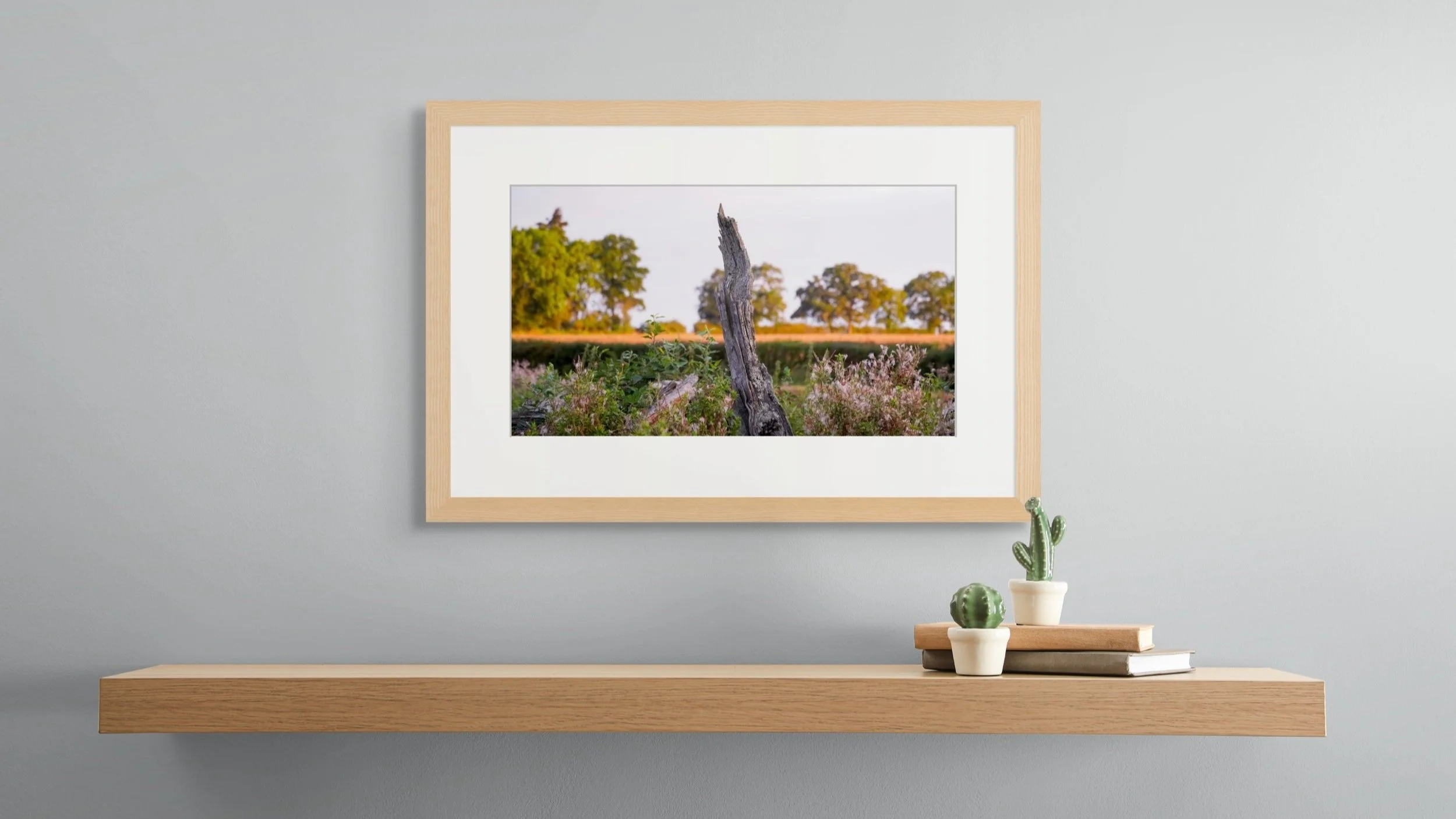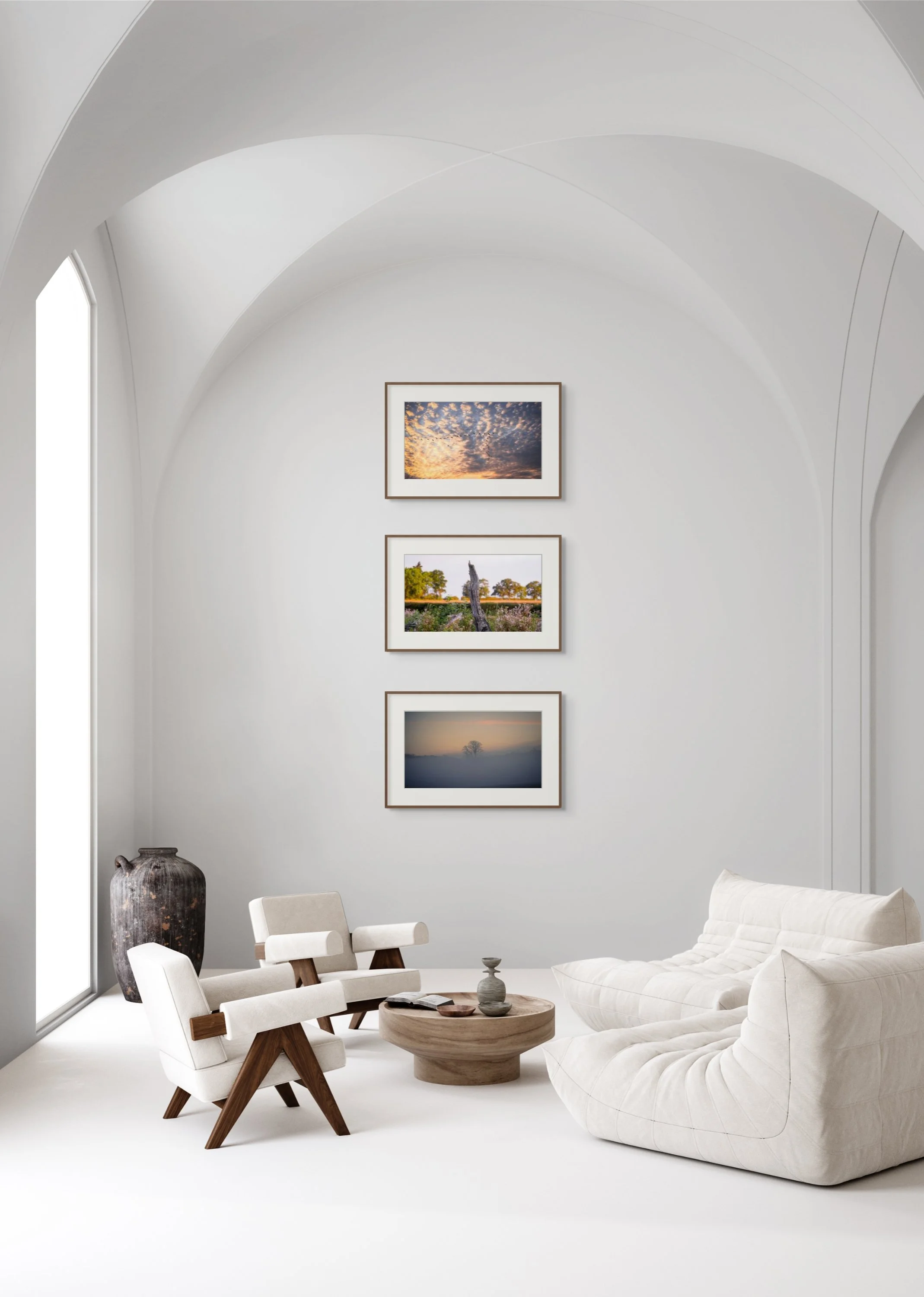



Dead Wood: Early light, softened bark, quiet sculpture
This old fallen tree, a familiar companion on our weekly walks, always seems to shift — its textures softened or sharpened by the mood of the day. On this September morning, the low light spilled across its contours like memory, turning decay into quiet sculpture and reminding me how even the simplest natural landmarks evolve with the seasons.
The photograph captures that transformation with quiet precision. The tree’s weathered trunk lies nestled among late-summer grasses and fading wildflowers, its surface mottled with moss and age. Sunlight filters through the trees behind, casting long shadows and catching the ridges of bark in warm, amber tones. There’s a stillness to the scene, but also a sense of slow movement — the kind that only time and nature conspire to create.
What might once have been overlooked becomes, in this light, a centrepiece. The fallen tree is no longer just debris from a storm or the inevitable arc of woodland life — it’s a sculpture shaped by wind, rain, and quiet persistence. Ruby often pauses here, nose twitching, as if sensing something beyond the visible. Her presence, though not pictured, threads through the moment.
This image sits within a wider rhythm of place-based storytelling — a portfolio that honours the overlooked, the seasonal, and the quietly enduring. It’s not dramatic, but it doesn’t need to be. Dead Wood invites the viewer to slow down, to notice the way light can lend grace to decay, and how memory settles into the textures of the land.
Whether hung in a quiet corner or used to anchor a gallery of rural reflections, this piece speaks to the beauty of impermanence. It’s a reminder that even fallen things hold form, meaning, and a kind of quiet dignity.
This old fallen tree, a familiar companion on our weekly walks, always seems to shift — its textures softened or sharpened by the mood of the day. On this September morning, the low light spilled across its contours like memory, turning decay into quiet sculpture and reminding me how even the simplest natural landmarks evolve with the seasons.
The photograph captures that transformation with quiet precision. The tree’s weathered trunk lies nestled among late-summer grasses and fading wildflowers, its surface mottled with moss and age. Sunlight filters through the trees behind, casting long shadows and catching the ridges of bark in warm, amber tones. There’s a stillness to the scene, but also a sense of slow movement — the kind that only time and nature conspire to create.
What might once have been overlooked becomes, in this light, a centrepiece. The fallen tree is no longer just debris from a storm or the inevitable arc of woodland life — it’s a sculpture shaped by wind, rain, and quiet persistence. Ruby often pauses here, nose twitching, as if sensing something beyond the visible. Her presence, though not pictured, threads through the moment.
This image sits within a wider rhythm of place-based storytelling — a portfolio that honours the overlooked, the seasonal, and the quietly enduring. It’s not dramatic, but it doesn’t need to be. Dead Wood invites the viewer to slow down, to notice the way light can lend grace to decay, and how memory settles into the textures of the land.
Whether hung in a quiet corner or used to anchor a gallery of rural reflections, this piece speaks to the beauty of impermanence. It’s a reminder that even fallen things hold form, meaning, and a kind of quiet dignity.
